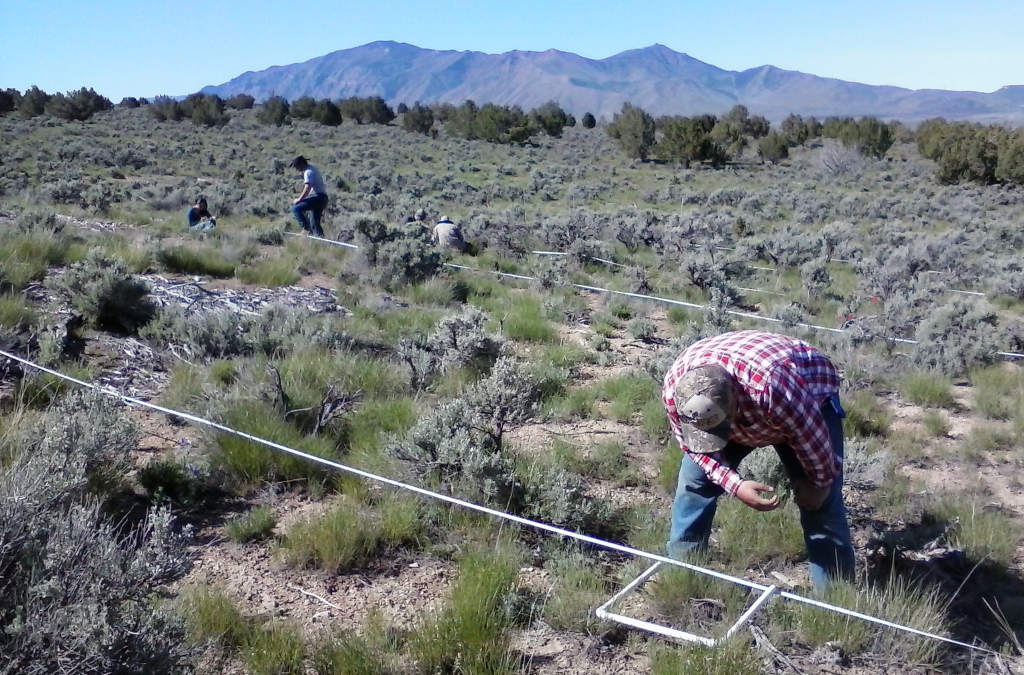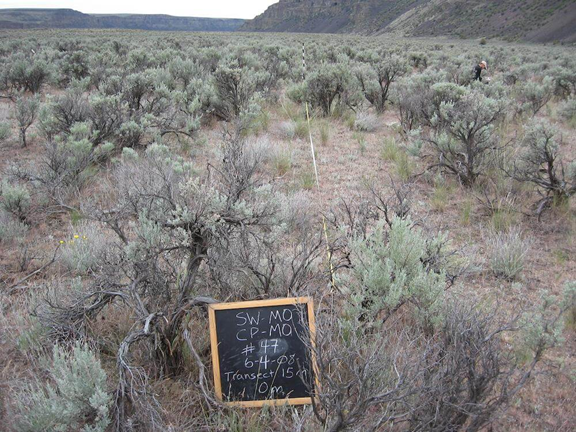 It has taken more than 20 years to complete this study of the sagebrush steppe. The original scientists who began it are mostly retired, and Dr. Lisa Ellsworth, who has finished it, took full charge of it just five years ago. Over those years, the need to protect the sagebrush steppe from the damage humans are doing to the planet has only grown greater – and the speed with which that human destruction has progressed has accelerated rapidly.
It has taken more than 20 years to complete this study of the sagebrush steppe. The original scientists who began it are mostly retired, and Dr. Lisa Ellsworth, who has finished it, took full charge of it just five years ago. Over those years, the need to protect the sagebrush steppe from the damage humans are doing to the planet has only grown greater – and the speed with which that human destruction has progressed has accelerated rapidly.
It’s very difficult to carry out a research project over such a long period of time. Far easier to go into a laboratory with a small number of plants or animals, subject them to treatment and record their reactions. It’s also a lot easier to get funding for that kind of research. Studying an entire ecosystem is the work of decades, but there is no substitute for it if you want to understand how a living system as big as 20 Oregon counties works.
It’s also not a job for one person alone. Ellsworth came into the project while it was already in motion, and she generously credits all of her predecessors and colleagues for the work they put into the study, singling out Claire Williams for special praise.
The steppe takes up more than two thirds of the land in Oregon. Once you’re out of the Willamette Valley, you are almost immediately in one of the most rugged and beautiful, yet delicate, environments on the continent. It is also one of the most endangered ecosystems, menaced by the increased heat, reduced rainfall and invasive species brought by human activity.
 Fires which once swept across the sagebrush steppe once or twice in a century are now coming much more frequently. Worse, while the steppe can recover from fire – which it has endured for millions of years, the fire damaged land has a tendency to encourage the growth of invasive species which are encouraged to grow by various things humans do on the land.
Fires which once swept across the sagebrush steppe once or twice in a century are now coming much more frequently. Worse, while the steppe can recover from fire – which it has endured for millions of years, the fire damaged land has a tendency to encourage the growth of invasive species which are encouraged to grow by various things humans do on the land.
Dr. Ellsworth and the others tested several different methods which were being used in Oregon or had been used elsewhere to try to reduce the frequency and severity of wildfire. The most effective methods were small, controlled fires – which had the unwanted side effect of encouraging invasive species. Nearly as effective, though more labor-intensive, was the cutting down and removal of plants. Least effective was the application of herbicides, which tended to leave the dry husks of invasive plants standing to serve as fuel for future wildfires, and wound up increasing, not decreasing, wildfire risk.
The sagebrush steppe is the same region which some conservatives dream of turning into a “Greater Idaho” with less regulation of habitat destruction, rather than more, and where the band of white supremacists who occupied the Malheur Field Station, doing great damage to buildings, the landscape and archaeological sites, are considered heroes by many, rather than terrorists and vandals. I asked Dr. Ellsworth if there were any method she had found that made it easier for her to reach the people who live in the region and explain the urgent need for protection – especially when many of them are still denying the reality of climate change.
“I think you have to relate your concerns to things they care about, like invasive species”, she said, rather than larger issues like global warming. “Invasive species follow disturbance,” which is easy for local residents to understand, since they have seen foreign plants growing from something like a bale of hay bought in from outside the area, “and they’re easier to deal with when there are just a few individuals, so early detection is critical.”
By John M. Burt
Do you have a story for The Advocate? Email editor@corvallisadvocate.com

